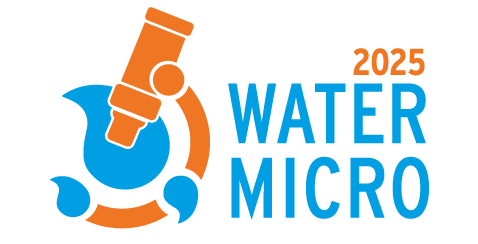Nynke Hofstra1, Stijn Peeters1, Panagis Katsivelis2, Majedul Islam3, Daniel Okaali4
1Wageningen University, Wageningen, Netherlands. 2Venthic Technologies, Athens, Greece. 3Khulna University, Dhaka, Bangladesh. 4Makerere University, Kampala, Uganda.
Introduction
Assessing microbial water quality is essential for tracking progress towards the Sustainable Development Goal (SDG) 6. Knowledge on pathogen levels in surface and drinking water and linking them to disease risk can advocate for the adoption of more effective WASH, water management and treatment practices. However, data on pathogens and faecal indicators are limited and unevenly distributed, particularly in low- and middle-income countries, resulting in knowledge gaps from data through to policy-making levels. Scientific modelling can be put to use to reduce the knowledge gaps.
In the WaterPath project we develop, with stakeholders, a toolkit that brings scientific modelling closer to the users. The Global Waterborne Pathogen (GloWPa) model is the basis for the toolkit and is extended to model the concentrations of pathogens in the surface water and consequent health risks. Additionally, scenarios can be incorporated using the latest knowledge on socio-economic development and climate change, including extreme events. This toolkit should help the users with understanding pathogen patterns, sources, future trends and the usefulness of interventions. During the workshop we want to inform the audience on waterborne pathogen modelling and the toolkit and obtain input from the audience on the toolkit.
Workshop or side event objective
The workshop aims to provide a holistic view on the topic of pathogen modelling and its challenges, from the perspectives of the modeller and the user. By demonstrating the case of the WaterPath Toolkit as an example of modelling and decision-support software, we will discuss the following topics: a) General aspects of water pathogen modelling, covering different geographical scales and future scenarios b) Scientific foundation on pathogen modelling, including climate, hydrology and risk assessment; c) Working with existing, global data sources; d) Effective communication of modelling outcomes for decision support; e) Stakeholder engagement, particularly in low and middle income countries.
Through interactive sessions, we will provide the opportunity for participants to: 1) gain experience with preparing and running a model for use cases, 2) discuss and brainstorm outcomes through the lens of the end user, and 3) propose ideas for future scientific directions and stakeholder engagement.
Methodology/format
1. Welcome
– Nynke Hofstra, Wageningen University – 5 minutes
2. Introduction to pathogen modelling in surface and drinking water (presentation)
– Majedul Islam, Khulna University and Daniel Okaali, Makerere University – 15 minutes
– Background
– Modelling pathogens using the GloWPa model
– WaterPath Toolkit: an overview
– Lessons learned from use-cases and stakeholder engagement
3. Breakout session: group selection and set-up – 5 minutes
4. Breakout groups – 50 minutes
Modellers group. Topics covered:
– preparing and making sense of data (input/output) for modelling,
– working with assumptions (eg. spatial resolution, hydroclimatic parameters, changes per pathogen/pathogen group),
– preparing simulations for baseline and future climate scenarios.
Users and policy group. Topics covered:
– defining a use case using the WaterPath Toolkit and linking to policy goals,
– working on aspects of data preparation, scenario building and reporting,
– consolidating and making sense of Toolkit outputs and linking them to policy and SDGs.
5. Conclusions: breakout findings presentation and reflections
– Stijn Peeters, Wageningen University – 15 minutes
Expected outcome
The workshop is expected to establish a knowledge foundation for the topic of waterborne pathogen modelling. After the session, participants will be able to find and download the toolkit, know what they can use it for and start adjusting it according to their particular use case.
In addition to the above, the workshop is heavily focused on the end-user perspective, meaning that participants will be expected to converse and brainstorm ideas on how to better bridge the science of pathogen modelling with policy. Any relevant feedback will be gathered with the help of an online survey during the end of the breakout session that will likely be used as a basis for follow-up communication and engagement after the conference itself.
